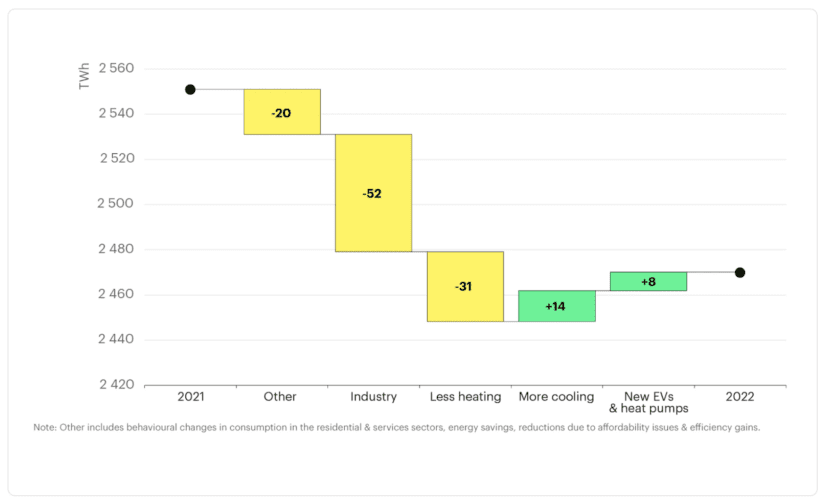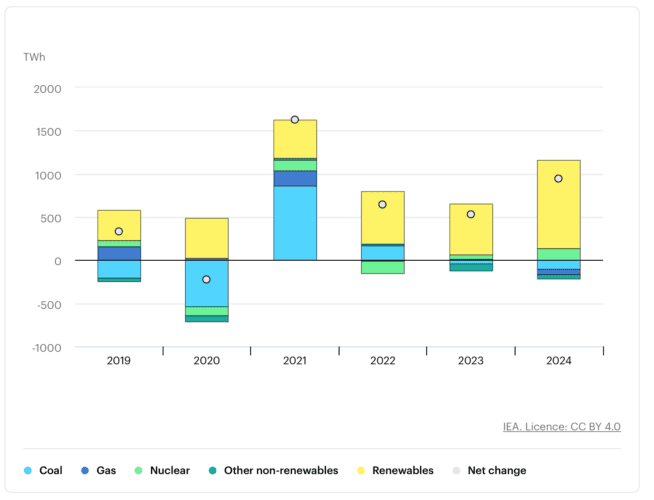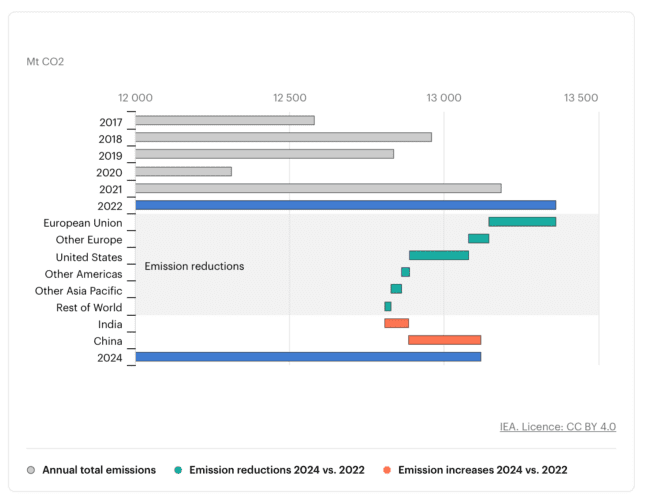Renewable electricity generation could outpace coal as the world’s largest source of power as early as next year, according to a new report from the International Energy Agency (IEA).
In its latest Electricity Market Report Update, the IEA cautioned that this historic moment would only come if weather conditions were favourable, but the prediction is the agency’s most ambitious to date.
The agency says its new prediction is thanks to the accelerated pace of growth of technologies like solar and wind, with global renewables on track to jump by a third this year.
The prediction comes as the IEA finds global electricity demand growth in general will ease in 2023, before accelerating again in 2024.
Growth is slowing because advanced economies are grappling with the continuing effects of the energy crisis – demand is expected to grow by slightly less than 2 per cent in 2023, down from 2.3 per cent in 2022.
If the world economy rallies next year, the IEA says electricity demand should rise by 3.3 per cent.
At a more granular level, electricity demand in both the EU and Japan is expected to drop 3 per cent in 2023, while the US will see a drop of almost 2 per cent. By contrast, in 2023 China’s electricity demand is predicted to grow by 5.3 per cent, while India’s looks set to grow by 6.5 per cent.
Almost two-thirds of the net reduction in EU electricity demand in 2022 is estimated to come from energy-intensive industries grappling with elevated energy prices.

In heartening news, renewables are set to meet all additional electricity demand in 2023 and 2024, with the renewables share of global electricity generation exceeding one-third for the first time next year.

What’s more, increases in emission from power generation in India and China are expected to be more than offset by declines in other regions. The EU alone accounts for 40 per cent of the total decline in emissions from power generation expected to occur over the next year and a half.

Global renewable generation increased by 7.8 per cent in 2022, its highest growth rate in 30 years. Growth is expected to dip slightly this year, though, as droughts hit hydropower production.
Rising demand for cooling as the world warms will also increase demand on electricity supply, the agency says.









